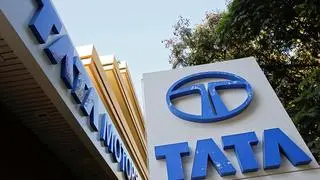Private sector banks have been playing catch-up with public sector lenders, unfortunately even in piling up bad loans. Over the past several quarters, they are doing this at a much faster pace than their public sector counterparts.
Two large lenders — ICICI Bank and Axis Bank — that account for over 70 per cent of the NPA problem at private banks are mostly to blame for the asset quality picture getting gloomier. It was only expected, then, that markets would heave a sigh of relief when ICICI Bank reported lower slippages for the September quarter, even as Axis Bank and YES Bank saw steep additions to their bad loan book.
But unlike YES Bank, which had a strong core performance to offset some of the downside in earnings on account of rising delinquencies, ICICI Bank and Axis Bank reported weak core earnings as well. Also, while both YES Bank and Axis Bank reported huge bad loan divergences (pertaining to FY17) in the September quarter, for ICICI Bank the RBI’s report is still awaited, which raises the possibility of higher slippages ahead.
The RBI’s asset quality review (AQR) exercise, which led to a sharp rise in slippages six-seven quarters back for public sector banks, has been impacting private lenders in a different avatar. The RBI’s Annual Risk Based Supervision (RBS) has led to a steep rise in slippages for most private banks. ICICI Bank had reported divergence of ₹5,100 crore pertaining to FY16, and accounted for it in FY17.
On the face of it, ICICI Bank’s slippages, which have moderated to ₹4,674 crore in the September quarter from the peak of around ₹8,200 crore in the June 2016 quarter, may appear comforting. But the still sizeable additions to bad loans, and around ₹19,000 crore of outstanding accounts in the watchlist, suggest more pain in the coming quarters.
Remember, until the December 2015 quarter, when the slippages first shot up, ICICI Bank’s quarterly delinquencies were in the ₹1,600-2,200 crore range. At over ₹4,000 crore, the latest September quarter slippages (sans divergence) still remain elevated.
For Axis Bank, the asset quality picture is no different. After reporting bad loan divergences of ₹9,478 crore pertaining to FY16, it reported another ₹5,633-crore divergences for FY17 in the latest September quarter. YES Bank has declared sharp divergences (pertaining to FY17) of ₹6,355 crore, in the September quarter.
Core performance While asset quality woes do not appear to be bottoming out for these players, there is a wide disparity in their core performance.
YES Bank saw a strong traction in loans that led to 33.5 per cent year-on-year growth in net interest income, and the bank still managed a 25 per cent growth in net profit in the quarter, despite a near-trebling of provisions.
For Axis Bank and ICICI Bank, which have a loan book nearly three times that of YES Bank, growth has been lower. ICICI Bank’s loan growth (domestic) stood at 13 per cent y-o-y in the September quarter, while for Axis Bank it was 16 per cent. While the loan growth is still noteworthy, given the general weak credit offtake, it has not translated to core earnings due to reversal of interest income owing to rise in bad loans.
Axis Bank reported a muted 1 per cent y-o-y growth in core interest income in the September quarter. ICICI Bank’s net interest income grew 9 per cent.








Comments
Comments have to be in English, and in full sentences. They cannot be abusive or personal. Please abide by our community guidelines for posting your comments.
We have migrated to a new commenting platform. If you are already a registered user of TheHindu Businessline and logged in, you may continue to engage with our articles. If you do not have an account please register and login to post comments. Users can access their older comments by logging into their accounts on Vuukle.